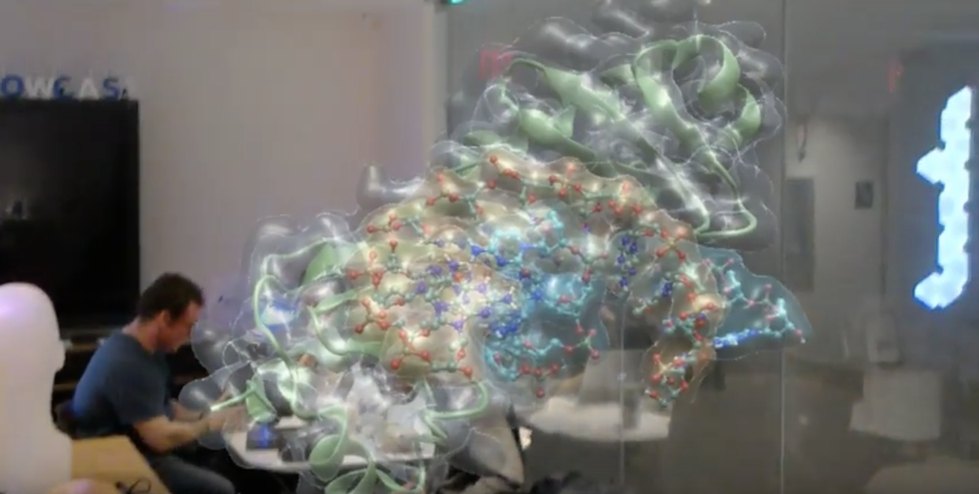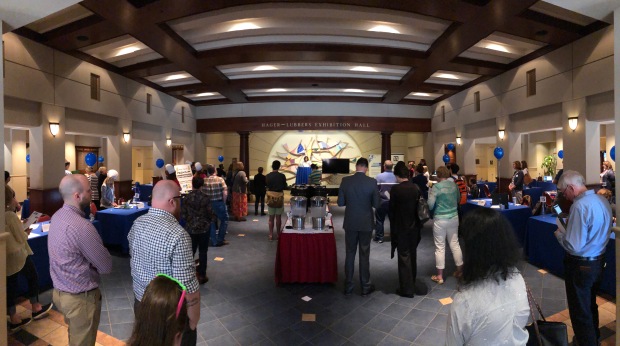 The 2019 Horizon Report has recently been released by EDUCAUSE, highlighting innovative trends and technologies in higher education.
The 2019 Horizon Report has recently been released by EDUCAUSE, highlighting innovative trends and technologies in higher education.
This report has always been an excellent #edtech radar so to speak, but also it raises some QUESTIONS:
- So where does GVSU, and specifically the eLearning and Emerging Technologies team fit into this report?
- What are the key areas that align with projects or initiatives that are occurring here at the university?
- How can we use this report in eLearning to provide insights and to gain better understanding so that we can better support faculty and the university in continuing to be innovative and distinctive?
This post, similar to last year’s review, will attempt to provide links to various activities and work happening among the eLearning and Emerging Technologies team that focuses on the current trends, challenges, and developments in this report.
#1 – Key Trends Accelerating Technology Adoption in Higher Education
Short-Term—Driving technology adoption in higher education for the next one to two years
- Redesigning Learning Spaces – At GVSU, the most noteworthy example of an innovative learning space is none other than the Mary Idema Pew Library Learning and Information Commons. This space was built, from the ground up, to be a different kind of library. Infused into the space are resources that have not been “typical” library features, such as: the Technology Showcase, IT Help Desk, Knowledge Market (tutoring, writing, research, speech, data inquiry lab), Exhibition Space, and an active learning classroom.
- Blended Learning Designs – The eLearning and Emerging Technologies team provides a wide array of resources and services to equip faculty in both the design and the use of technologies to transform learning. The question is no longer should I use technology to enhance my teaching, rather, how can I most effectively integrate technology effectively into my courses to increase engagement and student success. Further, the eLearning team assists in the support of the growth in distance education and the future of online and hybrid learning at GVSU.
Mid-Term—Driving technology adoption in higher education for the next three to five years
- Advancing Cultures of Innovation – The eLearning team facilitates innovation through support, seminars, an annual Teaching and Learning with Technology Symposium, Faculty Learning Communities, Digital Studio with lightboard, T-Squared podcast, TECH BYTE videos, and through the Technology Showcase.
18th Annual Teaching and Learning with Technology Symposium
- Growing Focus on Measuring Learning – Predictive analytics is an opportunity to explore more deeply at GVSU. Products like Starfish by Hobson’s would provide value in leveraging large data sets, combined with activity of students and faculty in Blackboard to help inform and improve retention efforts. The Blackboard LMS at GVSU includes a Retention Center, Performance Dashboard, and Course Reports providing faculty with just-in-time student data whereby they can engage with students through nudges, reminders, and proactive communication.
#2 – Significant Challenges Impeding Technology Adoption in Higher Education
Solvable—Those that we understand and know how to solve
- Improving Digital Fluency – With a digital studies minor, and high levels of faculty adoption of educational technology, eLearning’s Digital Studio and lightboard, and the Technology Showcase, GVSU is well on it’s way to engaging in new ways with student to improve their digital literacy skills. Campus discussions have also included the creation of a new space where students can access and use a variety of digital resources in a “digital media center”.
- Increasing Demand for Digital Learning Experience and Instructional Design Expertise – The eLearning team’s group of instructional designers make up “IDeL” who is on mission to: “…develop confident and competent faculty, prepared to teach in blended and fully online learning environments, who are able to integrate technology in a way that is learner-centered and pedagogically sound.”
Difficult—Those that we understand but for which solutions are elusive & Wicked—Those that are complex to even define, much less address
- The Evolving Roles of Faculty with Edtech Strategies & Rethinking the Practice of Teaching – Most noted here is the work of the eLearning team in supporting faculty innovation through large and small group conversations, sessions, and events. (eg. support, seminars, an annual Teaching and Learning with Technology Symposium, Faculty Learning Communities, Digital Studio with lightboard, T-Squared podcast, TECH BYTE videos, and through the Technology Showcase.)
#3 – Important Developments in Educational Technology for Higher Education
Time to Adoption: One Year or Less
- Mobile Learning
- Analytics Technologies
Time to Adoption: Two to Three Years
- Mixed Reality
- Artificial Intelligence
Time to Adoption: Four to Five Years
- Blockchain
- Virtual Assistants
At GVSU, through the eLearning and Emerging Technologies “Technology Showcase“, these #edtech trends are closely monitored. Most notable are exhibits and work being done around: virtual assistants with a custom app for the showcase that works with the Echo Show, mixed reality whereby one of the digital media developers on the eLearning team is working to explore virtual reality and augmented reality applications that are integrated into the curriculum, and mobile learning where a variety of technologies support BYOD along with tablet and smartphone integration.
Technology Showcase at GVSU
As we look further into the future, GVSU is focused on advancing education in a variety of ways. Specifically for the eLearning and Emerging Technologies team, we align most directly under the following 2021 Strategic Outcomes:
GVSU 2016-2021 Strategic Outcomes
Strategic Priority Area 1: Actively engage learners at all levels.
Institutional outcome D: Grand Valley supports innovative teaching, learning, integrative scholarly and creative activity, and the use of new technologies.
Objective 1.D.2: At least 93% of faculty members regularly use electronic course management tools, such as Blackboard, in their teaching. Baseline: 89% of faculty indicated either daily or weekly use of Blackboard in their teaching according to a GVSU faculty survey conducted winter 2016.
Objective 2.E.1: At least 75% of faculty and 75% of staff participate in professional development to expand, enhance or extend their competencies and capabilities within the context of the responsibilities of their positions. Baseline for faculty will be determined via Digital Measures in summer 2015. Baseline for Fall 2014 for staff is 50-55%.
Objective 3.D.2: At least 30% of undergraduate courses are offered in innovative approaches and formats, such as hybrid, online and competency-oriented. Baseline for undergraduate courses for Fall 2014 is 6%.
Objective 3.D.3: At least 30% of graduate courses are offered in innovative approaches and such as hybrid, online and competency-oriented. Baseline for graduate courses for Fall 2014 is 25%.
Objective 4.D.1: Effective technologies are integrated into every function and structure across the institution. Baseline: In 2013, IT implementation was above the median on 24 of 49 indicators across 7 functional domains.
eLearning Team Mission and Strategies
eLearning and Emerging Technologies is on mission and dedicated to supporting faculty, contributing to teaching excellence, and enhancing student success through: exemplary instructional design, effective application and integration of instructional technologies, interactive digital media development, administration and enhancement of the university’s enterprise learning management system (Blackboard), and the deployment of innovative emerging technologies.
Our team has been centered on executing the following strategies:
- Leverage exemplary instructional design and instructional technologies to: create pedagogically sound and learner centered instruction, improve and ensure course quality, enhance faculty effectiveness, and to increase student success and retention.
- Accelerate the evaluation, implementation, and application of educational technologies by coordinating resources, assisting, equipping, and empowering faculty and students.
- Partner with faculty, staff, and students, to showcase, advocate, and increase awareness of the effective application of innovative instructional technologies through sharing best practices.
- Develop interactive digital media courseware and resources to enhance teaching and improve student learning.
- Advance the capabilities and adoption of the university’s enterprise course management system (Blackboard) to increase the effectiveness and efficiency of content delivery, assessment, and communication to support innovative teaching and learner engagement.
- Build institutional capacity to: integrate and implement technologies into teaching and learning practices, generate economies of scale, and increase their deployment across the institution.
- Investigate, acquire, test, prototype, pilot, research, and evaluate cutting-edge emerging technologies that have the potential to transform education, enhance teaching, and improve student learning.
- Survey, collect data, analyze, and evaluate the effectiveness of instructional technologies, services, and support.
The eLearning team provides a wide array of support and services designed to empower faculty and contribute to student success.

Are you a professor at GVSU? Contact the eLearning and Emerging Technologies team, we’re here to help at the intersection of teaching, learning, and technology!






















